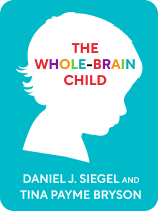

This article is an excerpt from the Shortform book guide to "The Whole-Brain Child" by Daniel J. Siegel and Tina Payne Bryson. Shortform has the world's best summaries and analyses of books you should be reading.
Like this article? Sign up for a free trial here .
What are the most notable The Whole-Brain Child quotes by Daniel Siegel? What do these quotes say about child’s brain development?
The Whole-Brain Child is a practical parenting handbook. The following The Whole-Brain Child quotes highlight the authors’ key concepts and ideas about the trajectory of child’s brain development and their practical implications for parenting.
Read these The Whole-Brain Child quotes by Daniel Siegel.
The Whole-Brain Child Quotes
“One of the surprises that has shaken the very foundations of neuroscience is the discovery that the brain is actually “plastic,” or moldable. This means that the brain physically changes throughout the course of our lives, not just in childhood, as we had previously assumed. What molds our brain? Experience. Even into old age, our experiences actually change the physical structure of the brain.”
Research shows that experiences shape your brain throughout life. This happens through a multistep process:
- When you experience something, certain neurons—or brain cells—fire a charge through their attached circuits. Which neurons fire depends on what you experience; the smell of pancakes activates certain neurons, while a feeling of happiness makes different neurons fire.
- When neurons fire together, they create a connection—for example, linking the smell of pancakes with the feeling of happiness.
- Repeated experiences strengthen this association, rewiring the brain to trigger happiness when you smell pancakes.
“The key here is that when your child is drowning in a right-brain emotional flood, you’ll do yourself (and your child) a big favor if you connect before you redirect.”
According to Daniel Siegel, there is no point in trying to address children’s misbehavior through appeal to logic. When your child is in the midst of an emotional takeover by the right brain, you can’t get through to her rational brain.
Instead, connect emotionally by using soft touch and voice to try to identify how your child is feeling and why. When your child begins to calm down and open up emotionally, she will be receptive to approach the situation from the place of reason as opposed to emotion.
“While the downstairs brain is well developed even at birth, the upstairs brain isn’t fully mature until a person reaches his mid-twenties.”
The concept of the upstairs and downstairs brain is central to the whole-brain parenting method. The downstairs brain controls basic functions and automatic reactions, whole the upstairs bran governs high-level thinking such as planning, problem-solving, and analytical reasoning.
A mind that’s vertically integrated between the downstairs and upstairs brain is like a house with an easily accessible stairway connecting the upstairs and downstairs. The upstairs brain tempers the impulses and strong emotions of the downstairs brain, while the downstairs brain contributes emotions and gut instincts to upstairs decision-making.
Children have an added challenge to vertical integration, because their upstairs brains don’t fully mature until they’re in their mid-20s. This makes it even more important that you give your child an opportunity to practice using her upstairs-brain.

———End of Preview———
Like what you just read? Read the rest of the world's best book summary and analysis of Daniel J. Siegel and Tina Payne Bryson's "The Whole-Brain Child" at Shortform .
Here's what you'll find in our full The Whole-Brain Child summary :
- How to increase your child's self-awareness and emotional control
- Why the logical and emotional sides of the brain have to work together
- How to figure out why your child is afraid of something





